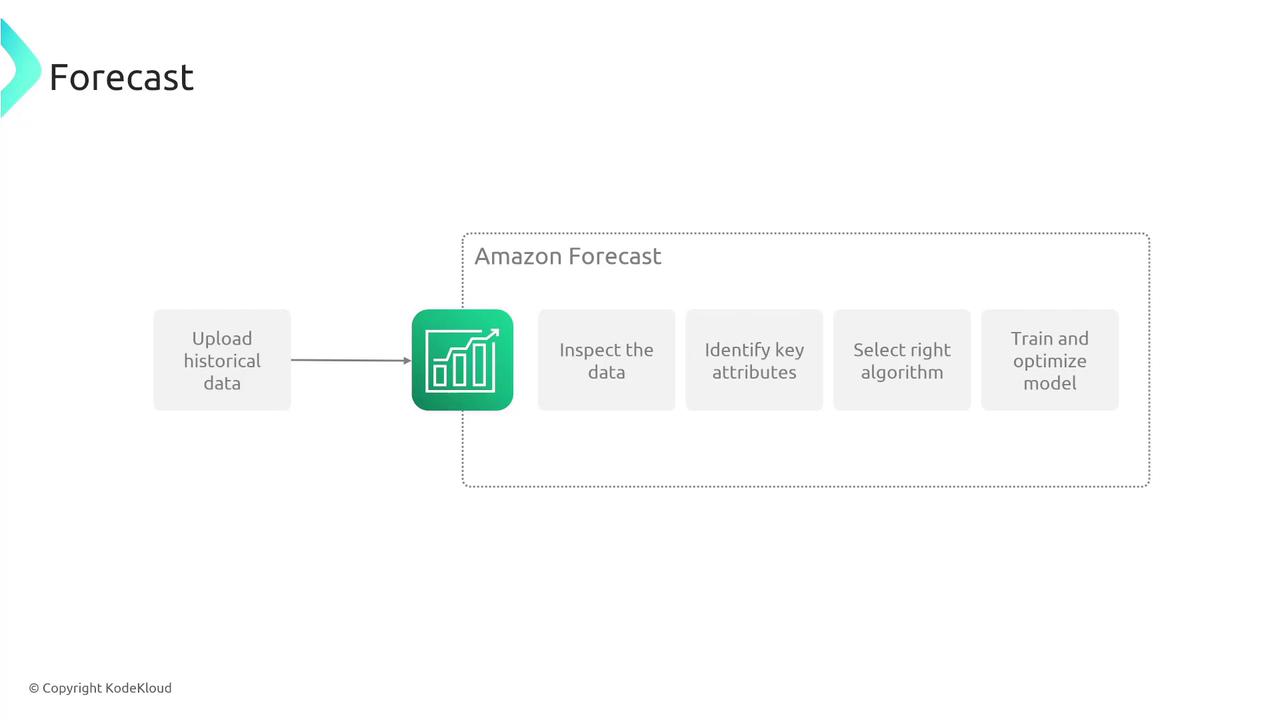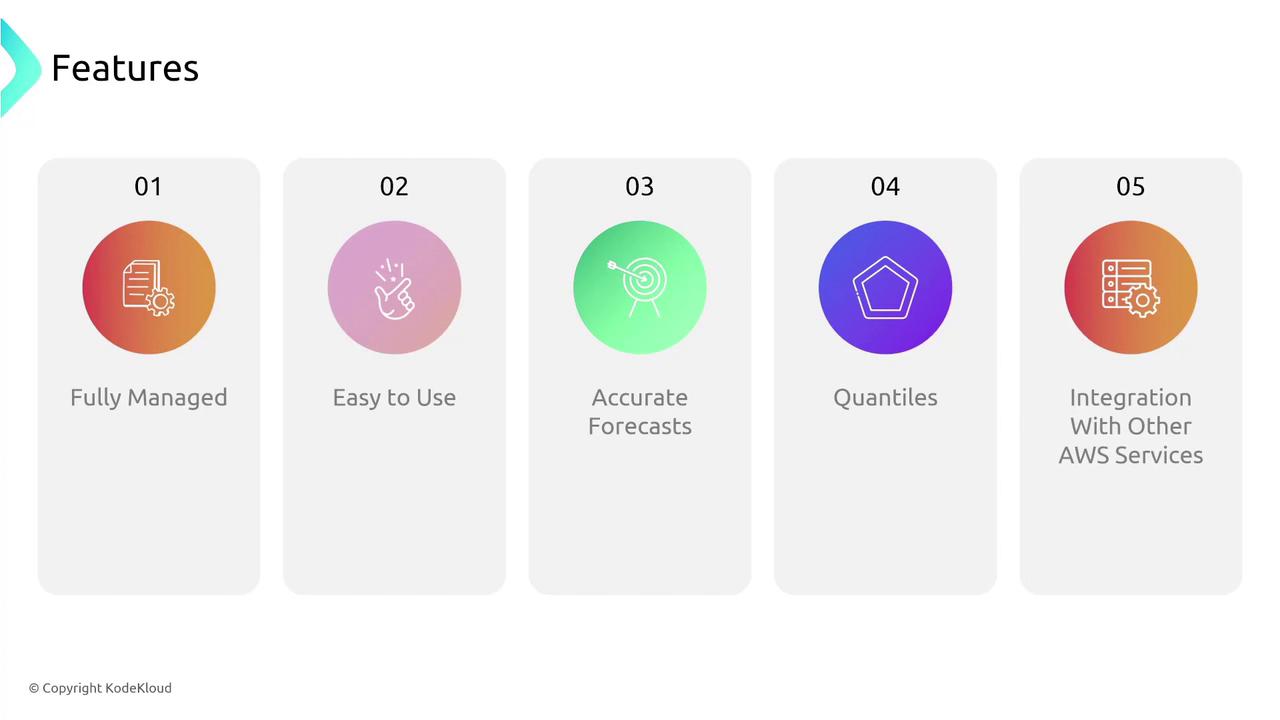AWS Solutions Architect Associate Certification
Services Data and ML
Forecast
Welcome back, future solutions architects! In this article, we explore the power of inference with Amazon Forecast—a fully managed machine learning service from AWS designed to generate highly accurate time series predictions without requiring deep expertise in machine learning.
Amazon Forecast processes historical data such as sales figures, inventory levels, or website traffic to identify underlying patterns like seasonality and trends. By simply uploading your historical data, the service automatically inspects and detects key attributes, including seasonal buying patterns. For example, when analyzing sales data, Forecast may identify recurring trends on an annual, quarterly, or custom schedule, then select the best-suited built-in algorithm based on these characteristics.

After the algorithm is selected, Amazon Forecast trains the model using your historical data, fine-tuning parameters to minimize forecasting errors. The result is an optimized forecasting model capable of predicting future data points by leveraging the trends and patterns learned during training.
While you could build a forecasting solution using Amazon SageMaker, doing so typically requires a deeper understanding of machine learning. Amazon Forecast simplifies this process by automating many complex tasks involved in time series forecasting, making it an ideal choice for users without specialized ML expertise.
Amazon Forecast provides multiple methods for accessing your forecasts:
- Visualize predictions directly in the AWS Console.
- Export the forecasts as a batch CSV file.
- Retrieve predictions programmatically via the Forecast API.

The service ensures the accuracy of its forecasts by accounting for significant factors such as seasonality and trends. Importantly, Forecast outputs include quantiles (or percentiles) which help you gauge a range of possible outcomes. For example, a forecast might indicate a 70% probability for one scenario and a 25% probability for an alternate outcome, empowering you to plan for both best-case and worst-case scenarios.
Integration with AWS Ecosystem
Amazon Forecast seamlessly integrates with several AWS services. Forecast outputs can be exported to Amazon S3 and then further processed or utilized by other services like AWS Lambda. Additionally, integration with AWS CloudTrail and IAM enhances the overall security and management of your forecasting workflows.

In summary, Amazon Forecast empowers you to generate time series predictions without needing deep machine learning knowledge. Its automated approach makes it a top choice for scenarios where rapid, accurate forecasting is essential—especially when the project team lacks advanced machine learning skills. This is a crucial consideration for AWS certification exam questions that require selecting a service based on ease of use and minimal setup.
We hope this article clarifies how Amazon Forecast works and inspires you to incorporate its capabilities into your architectural solutions. See you in the next lesson!
Watch Video
Watch video content